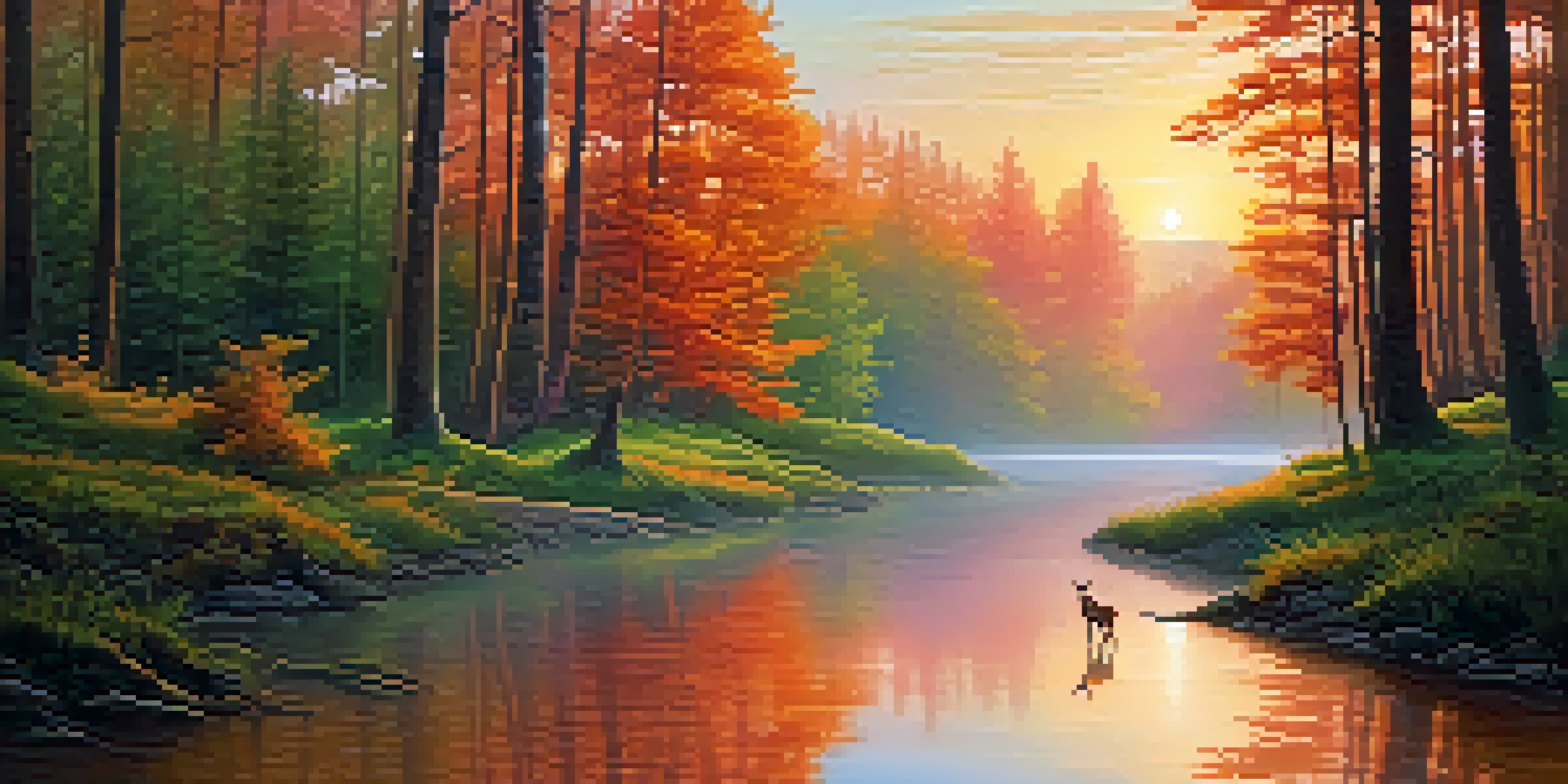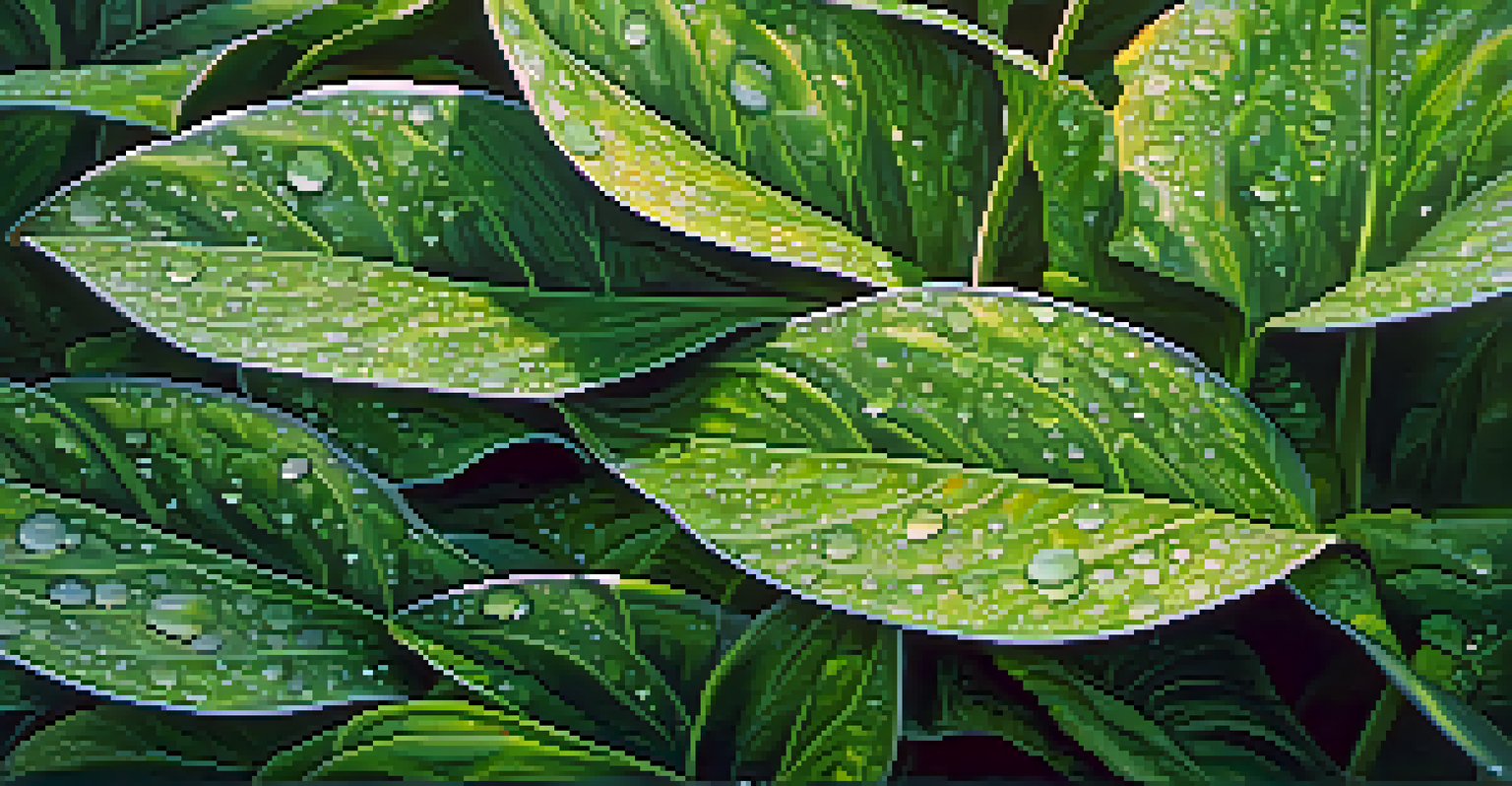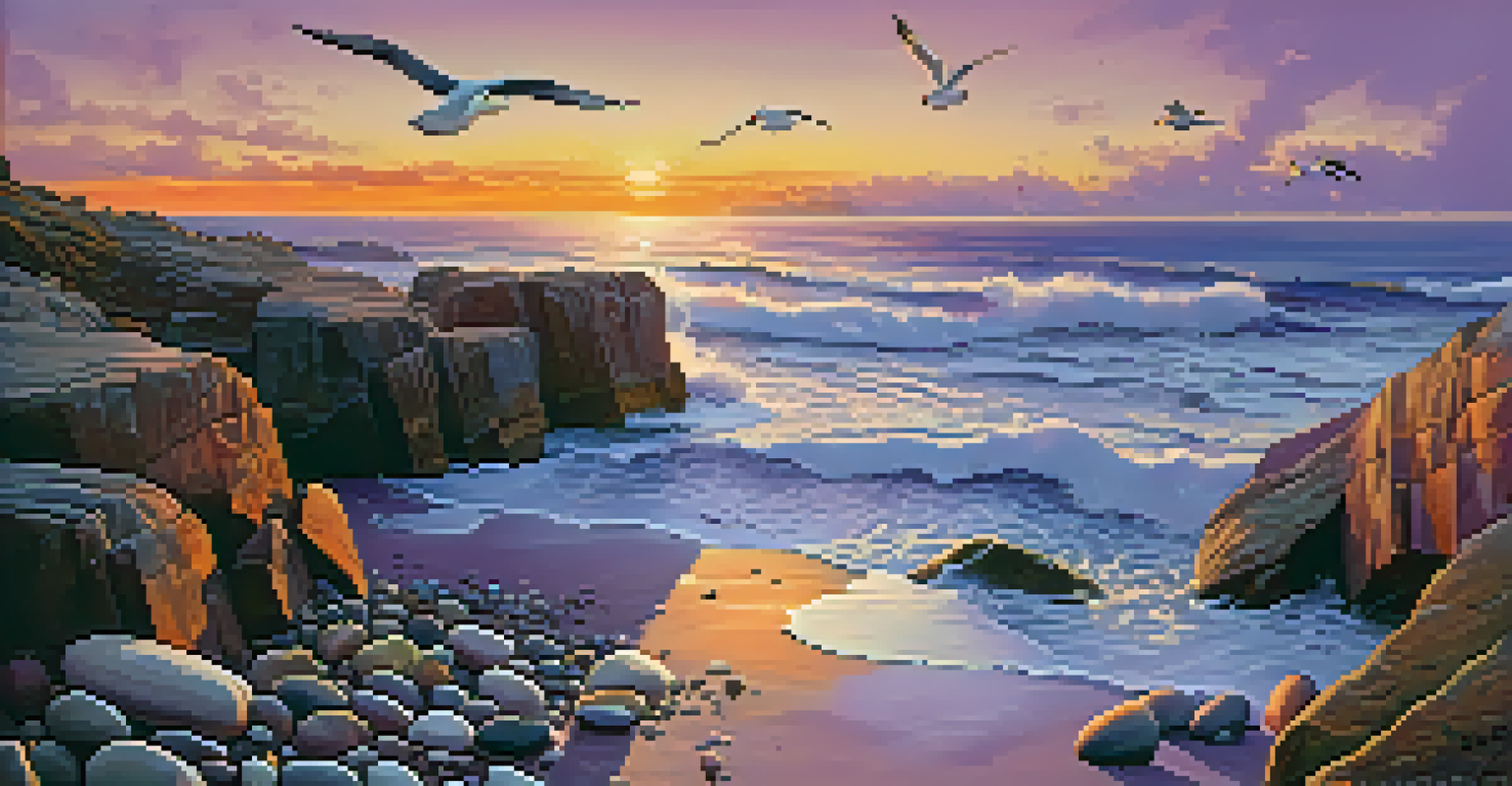How Contemporary Artists Use Nature as Inspiration in Painting

The Natural World as a Muse for Artists Today
Contemporary artists often find themselves captivated by the beauty of nature. From the vibrant colors of a sunset to the intricate patterns of leaves, the natural world offers endless inspiration. This connection to nature is not just aesthetic; it reflects a deeper appreciation for the environment and its complexities.
Art is a way of recognizing oneself in nature and nature in oneself.
Many artists venture outdoors to capture the essence of their surroundings, blending realism with personal interpretation. This practice can lead to striking works that resonate with viewers on an emotional level. For instance, an artist might depict a serene forest scene, evoking feelings of peace and tranquility.
Moreover, nature serves as a powerful symbol in contemporary art, often representing themes of growth, change, and sustainability. Artists use their canvases to communicate important messages about environmental conservation and our relationship with the planet.
Techniques Inspired by Natural Elements
Contemporary artists employ a variety of techniques to bring their nature-inspired visions to life. Some might use bold brush strokes to mimic the movement of wind through trees, while others may experiment with textures to represent the ruggedness of a mountain landscape. Each technique helps to immerse the viewer in the scene.

For example, watercolor artists often utilize fluid washes to capture the softness of a misty morning. This method allows for a delicate interplay between light and color, creating a dreamlike quality. The choice of medium itself can enhance the natural theme, as seen in the use of earthy pigments derived from plants and minerals.
Nature Inspires Modern Artists
Contemporary artists draw deep inspiration from the beauty and complexity of the natural world, using it to create emotionally resonant works.
Additionally, mixed media approaches allow artists to incorporate actual natural materials into their work. This not only adds depth but also creates a tactile experience that invites viewers to engage more fully with the art.
Nature's Impact on Color Choices in Modern Art
Color plays a pivotal role in how nature is depicted in contemporary art. Artists often draw inspiration from the rich palettes found in landscapes, such as the vibrant reds and oranges of autumn leaves or the cool blues of ocean waves. These colors can evoke specific emotions and set the tone of a piece.
Nature is not a place to visit. It is home.
Furthermore, the trend of using sustainable materials has led to a resurgence of natural pigments. This shift not only enriches the artwork but also aligns with a growing consciousness about environmental impact. Artists are increasingly aware that their choices can reflect a commitment to preserving the beauty they seek to depict.
In this way, the colors chosen are not just aesthetic choices but also statements about the artist's values and relationship with the environment. The interplay of color and meaning adds layers of understanding for the viewer.
Symbolism of Nature in Contemporary Art
Nature often serves as a powerful symbol in contemporary artwork, representing themes such as rebirth, resilience, and harmony. Artists might portray a flowering tree to symbolize new beginnings or depict a withering plant to reflect decay and loss. These symbols resonate deeply with viewers, inviting personal interpretation.
For instance, an artist might use imagery of water to explore themes of fluidity and change, suggesting that life is constantly in motion. This connection to nature encourages audiences to reflect on their own experiences and relationships with the environment.
Symbolism Reflects Environmental Themes
Nature serves as a powerful symbol in contemporary art, conveying themes of growth, change, and the pressing need for environmental conservation.
Moreover, the incorporation of natural symbols can serve as a commentary on societal issues, such as climate change or urbanization. By embedding these themes within their work, artists engage in broader conversations about the world we inhabit.
Environmental Awareness Through Art
In recent years, many contemporary artists have taken on the role of environmental advocates through their work. By highlighting the beauty of nature, they emphasize the need for conservation and protection of our planet. This advocacy is often woven into the fabric of their art, creating a compelling narrative.
For example, some artists create large-scale installations using recycled materials found in nature, making a statement about waste and sustainability. Others might produce powerful images of endangered species, sparking conversations on biodiversity and habitat loss.
This blend of artistry and activism not only raises awareness but also inspires viewers to take action. Through their paintings, artists can motivate audiences to appreciate and protect the natural world.
Personal Connections to Nature in Artistic Expression
For many artists, nature is not just a subject but a deeply personal source of inspiration. Experiences spent outdoors can evoke a sense of peace and belonging, which often translates into their work. This personal connection adds authenticity and depth to their artistic expression.
An artist might recall childhood memories of playing in a forest, which influences their choice of subject matter and style. This nostalgic lens often evokes a sense of wonder and invites viewers to share in those memories, fostering a sense of connection.
Art as Environmental Advocacy
Many artists leverage their work to advocate for environmental awareness, using art to inspire action and appreciation for the natural world.
By sharing their unique perspectives on nature, artists create a bridge between their experiences and those of the audience. This shared connection can foster empathy and a greater understanding of the importance of preserving our natural surroundings.
The Future of Nature-Inspired Contemporary Art
As we move forward, the relationship between contemporary artists and nature continues to evolve. With increasing awareness of environmental issues, artists are likely to explore this theme even more deeply in their work. New technologies and materials may also influence how nature is interpreted on canvas.
For instance, digital art forms allow for innovative representations of natural scenes, blending reality with imagination. Artists might use virtual reality to create immersive experiences that transport viewers into fantastical landscapes, challenging traditional notions of representation.

Ultimately, the future of nature-inspired art holds exciting possibilities. As artists continue to draw from the beauty and complexity of the natural world, they will undoubtedly inspire audiences to appreciate and care for the environment in new and meaningful ways.